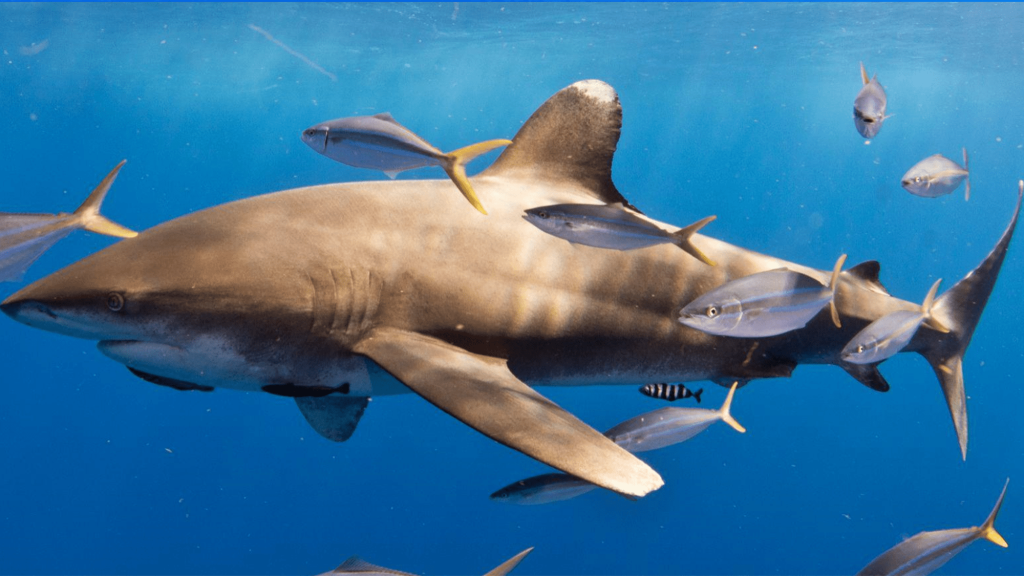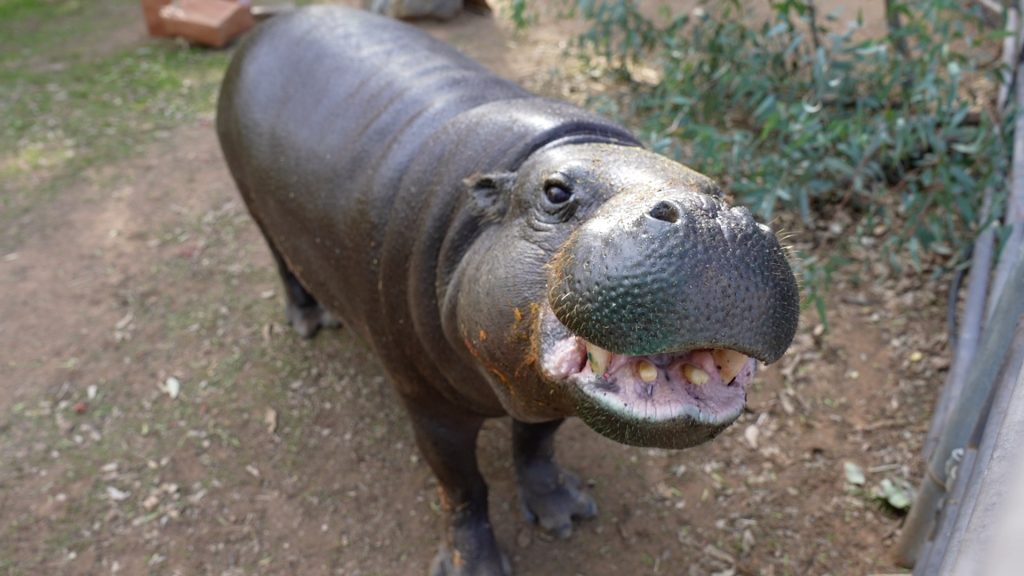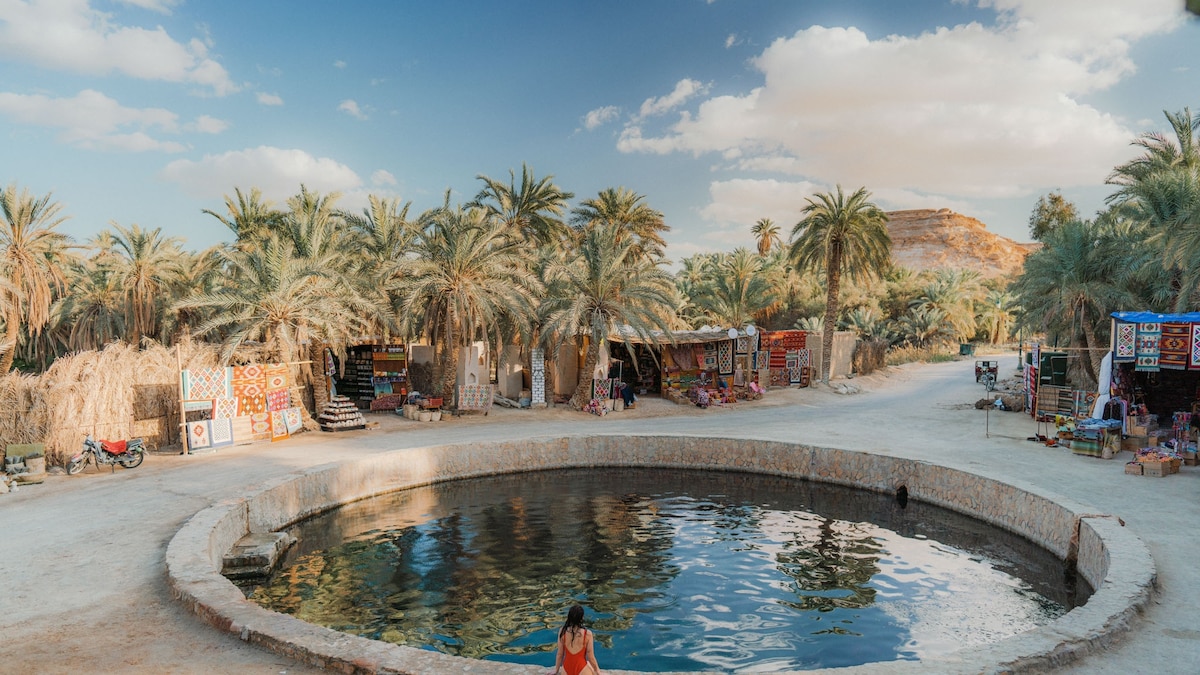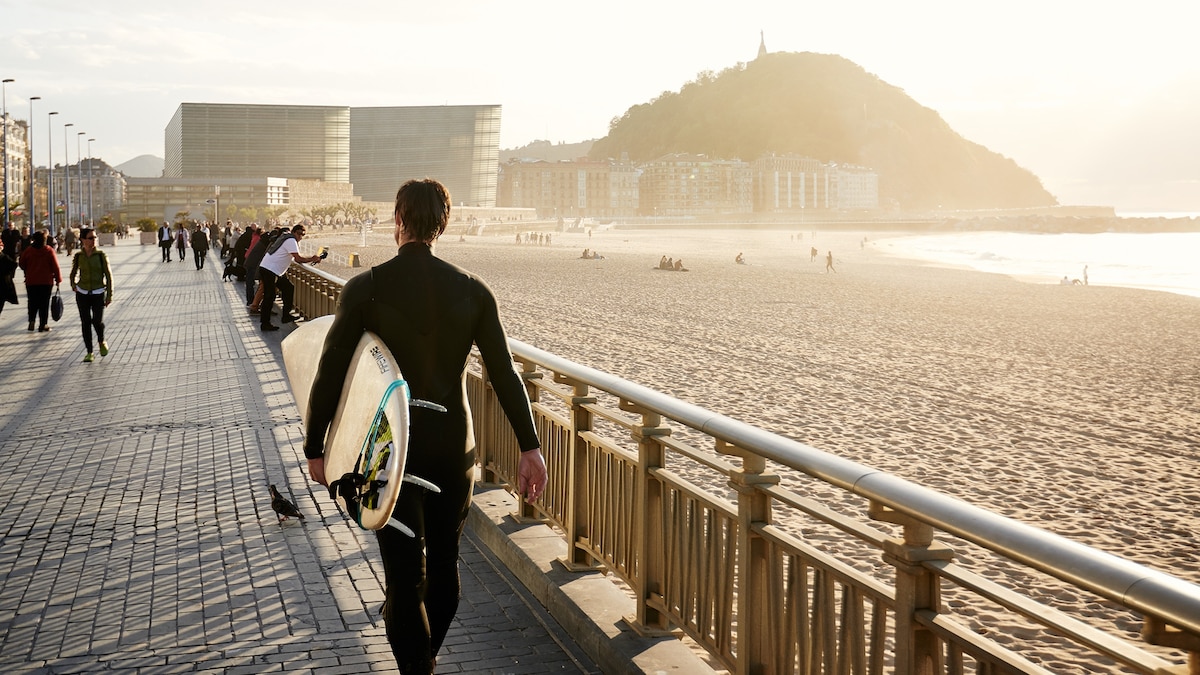Now Reading: How Maasai culture coexists with safari in southern Kenya
-
01
How Maasai culture coexists with safari in southern Kenya
How Maasai culture coexists with safari in southern Kenya
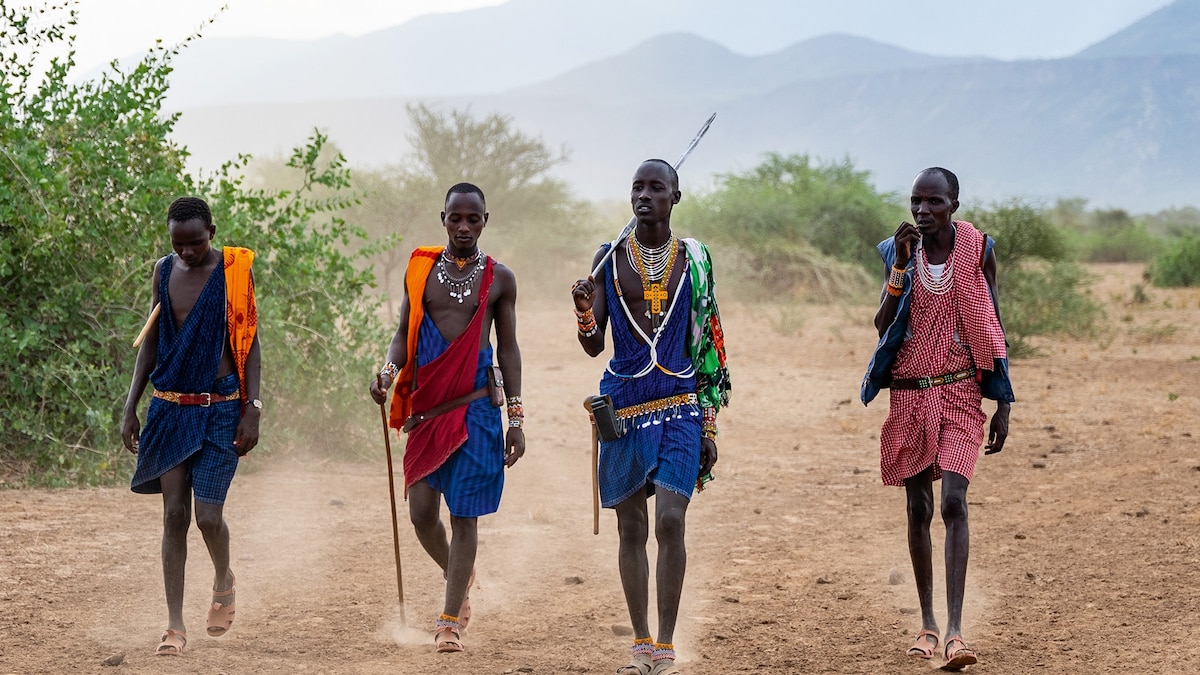
This article was produced by National Geographic Traveller (UK).
“Simba!” The urgent whisper — ‘lion’ in Swahili — comes from Julius Naurori as he stands bolt upright in the back of our 4WD like a human antenna.
Immediately, our guide in the front slows the car to a cautious prowl and a hush descends, save for the tinkling silver discs tied to Julius’s waist as they sway in time with the rocking of the car. The dawn sky is still blushing crimson, and at first it’s hard to see what’s almost directly in front of us: four sleeping lions, their chocolate manes camouflaged as they lie on their sides in long, unruly grass marking the banks of the Mara River.
Our guide is Roca River Camp co-owner Ross Withey, and Julius, our wildlife-spotter, is his wingman on this safari drive in the Maasai Mara National Reserve. Julius is a man of few words, but he can read the savannah’s undulating plains and its complex ecosystems like the creases of his hands. “The hippos are not going to be lucky tonight,” he says, remarking on the lions’ lean bellies as we watch their rib cages rise and fall. We are totally alone, save for the haunting cry of a tropical boubou hidden in the riverine tree branches.
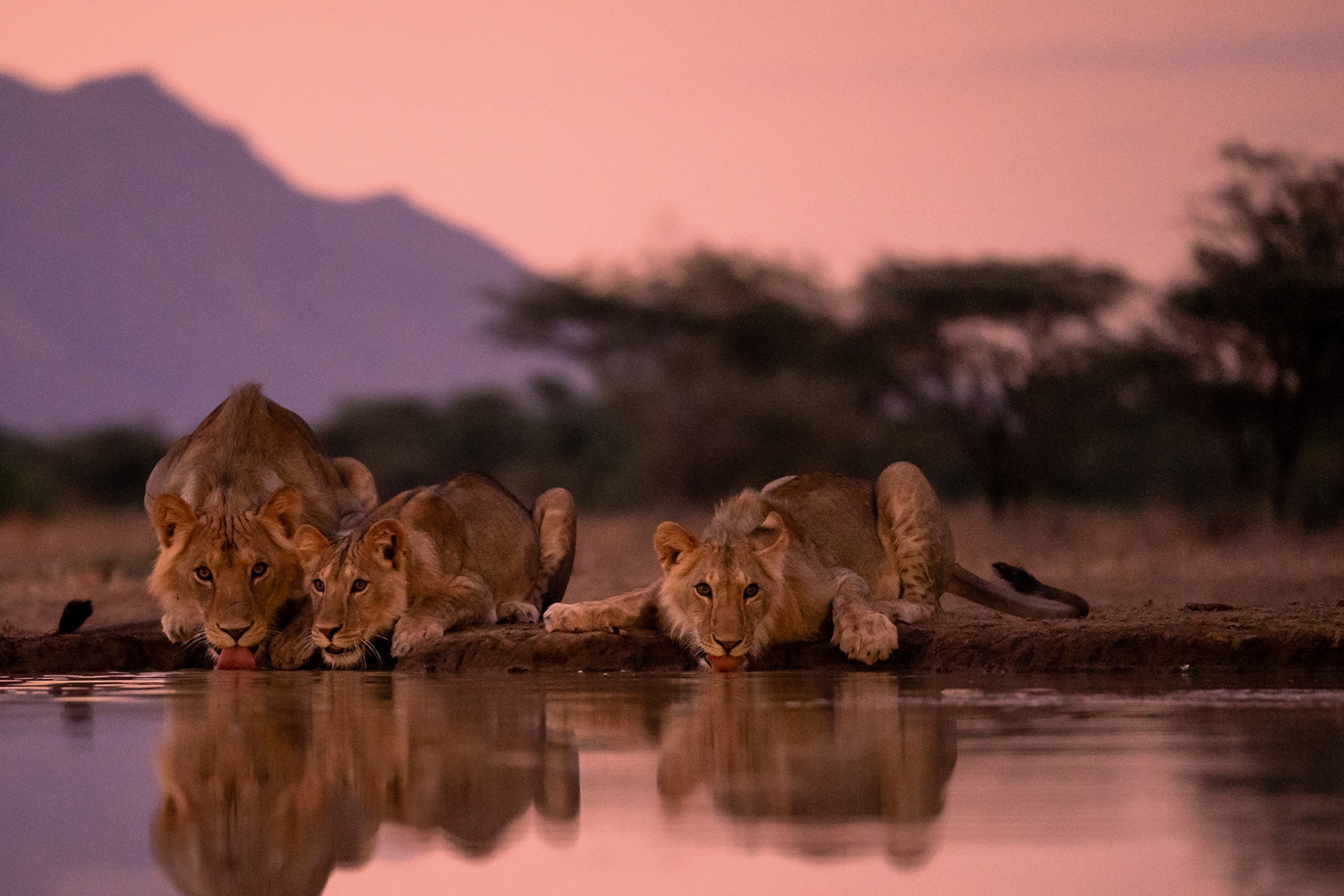
“The hippos are not going to be lucky tonight,” says Roca River Camp co-owner Ross Withey, remarking on the lions’ lean bellies as we watch their rib cages rise and fall.
Photograph by Melanie Van Zyl
Like most wildlife-spotters in the Mara, Julius is Maasai. He comes from a long line of nomadic pastoralists who have driven cattle across southern Kenya and northern Tanzania’s Serengeti for centuries. It’s the same corridor used by wildebeest during the annual Great Migration, with both cattle and wildlife following the pastures and water. This natural event has made the Mara one of Africa’s most popular safari destinations, yet for young spotters like Julius, it’s also home. Keeping a constant eye out for big cats comes with the territory.
It’s been less than 24 hours since I landed in the Maasai Mara, and this famous park is already challenging my preconceived ideas of what it means for a place to be wild. I’d expected it to be virtually uninhabited, but it’s far from it. On the flight in from Nairobi, there were vast, undeveloped clay-coloured plains and deeply gouged escarpments like sculptures. And in between the land’s natural contours, I’d spotted distinct man-made circles — small Maasai villages protected by traditional fencing systems called bomas, where farmers eke out a living. Interspersed with herds of antelopes, there had been cows.
Almost half of Kenya’s healthy population of lions stalks the Maasai Mara. It’s hard to imagine a world where these large predators can coexist with villages hosting livestock farmers and their cattle, but the four now in front of me certainly aren’t fazed by human presence. Eventually, one lazily lifts his head and fixes his eyes on us, and our driver restarts the car to move on. A few minutes later, we pull into Roca River Camp — a line of 10 comfortable canvas tents dotted among persimmon trees on a raised bank facing the Mara River inside the reserve. Behind the tents, a halo effect is forming on the never-ending plains of grass that stretch away from the river, the rising sun burnishing each strand an ethereal gold.
I’m on a tour of southern Kenya designed by Explorations Company, an Africa veteran with close ties to the conservation-led African Wildlife Foundation. The operator has spent 30 years scoping out small camps like this one that can offer the most intimate wildlife experiences while educating guests about local conservation efforts. Roca is family-run by Kenyans Caro and Ross Withey; it was Caro’s dad, Willie Roberts, who established the first wildlife conservancy on public land in Kenya in the 1980s. Today, sitting alongside national parks and reserves, there are 170 conservancies across the country, covering almost 6.5 million hectares — 11% of Kenya’s landmass. In the Maasai Mara, the model gives the traditional Maasai landowners a rental fee from the lodges and a nightly fee for every guest, creating a compelling reason to live harmoniously with the wildlife rather than prey on it.

In the Maasai Mara, the model gives the traditional Maasai landowners a rental fee from the lodges and a nightly fee for every guest, creating a compelling reason to live harmoniously with the wildlife.
“Here in the Mara, people are no longer killing predators for fun — they only kill them for protection,” explains Dominic Sakat, a community outreach officer from the Mara Predator Project who joins us for lunch later that day. The initiative was launched by the Kenya Wildlife Trust in 2013, at a time when Maasai warriors were still hunting lions as a traditional rite of passage. While this practice has now been all but stamped out and poaching is down, too, Dominic explains that lions are still under threat from farmers trying to protect their highly prized livestock.
We’re sitting at a long, communal table in front of the camp while a muscular, tusked warthog ferrets in the grasses behind us and two hippos slosh around in the river below. But Dominic, wearing a sand-coloured safari shirt and sunglasses balanced on his head, only has eyes for the big cats. His job is to work with Mara communities to assess and monitor threats to the area’s major predators, which include elusive leopards and a small, fragile population of cheetahs, as well as lions.

Roca River Camp plays host to a line of 10 comfortable canvas tents dotted among persimmon trees on a raised bank facing the Mara River inside the reserve.
Photograph by Melanie Van Zyl
Having grown up in a local Maasai village, Dominic has seen first-hand that one of the greatest challenges the animals now face is human population growth. It’s estimated that more than 70% of Kenya’s wildlife lives outside of protected reserve areas and national parks, and human-wildlife conflict is increasing. The Maasai farmers and wildlife are crossing paths more frequently and local villages are encroaching further into wildlife terrain. “In the Mara, the human population doubles every nine years,” he says. “And if you drive around, you’ll see there are no barriers between wildlife and communities.” Conservation, therefore, is more important than ever in this region.
This fenceless existence gives me pause for thought again when we drive out for sunset at one of the Mara River’s famous crossings. Some half a million wildebeest — and countless safari 4WDs — pass here during the annual Great Migration. Out of season, there’s nobody here but us and a vast pod of hippos wallowing in the water at our feet. How fast can a hippo run, I wonder, as I stand at the water’s edge watching theatrical yawns reveal giant fangs. “Faster than you’d imagine,” says camp manager Philip McLellan as he pours a round of drinks. Their sonorous grunts erupt like a loud conversation, masking the sound of the ice clinking in our gin and tonics. “I have a saying that one of them farts and the others all laugh,” he adds with a wry smile.

How fast can a hippo run, I wonder, as I stand at the water’s edge watching theatrical yawns reveal giant fangs. “Faster than you’d imagine,” says camp manager Philip McLellan as he pours a round of drinks.
Photograph by Melanie Van Zyl
Winged wonder
Flying over Lake Magadi on the borders of Kenya and Tanzania the following day is like a vision from Dante’s hell. “You definitely don’t want to swim in it. It would burn your skin off,” says our co-pilot Aaron D’Cruz through his headset as we bank down low for a closer look at the lake’s potent soda ash crust in our 12-seater propeller plane. We’re on our way to Shompole, a safari region southeast of the Mara that’s far less known. Explorations Company anticipates it’s on the cusp of finally getting the attention it deserves, thanks to the opening of a luxury lodge from high-profile safari operator Great Plains in 2026, but we’re headed for another small, family-run camp called Shompole Wilderness.
Below us, the lake’s mottled surface creates beautiful, rippling veins that look like stilton. The soda ash is one of the area’s biggest exports, but the nutrients also make the area a prolific breeding ground for flamingos and pelicans, which draws bird enthusiasts. Before long, the plane is surrounded by flamingos. Some fly straight past my window; others appear to float below our metal wings, like dozens of pink arrows soaring towards invisible targets.
From up here, I can see the same circular village bomas I’d seen flying over the Mara, but the landscape is much more arid — the earth cracked like a dry heel, small whirlwinds called dust devils spinning around lonely acacia trees. “What makes Shompole so special is that the river flowing from the escarpment provides a green area and swamp — that’s why all the wildlife comes here during the dry season,” says Aaron. Sure enough, as we land, I see an eruption of greenery in the parched expanse below.

Roca is family-run by Kenyans Caro and Ross Withey; it was Caro’s dad, Willie Roberts, who established the first wildlife conservancy on public land in Kenya in the 1980s.
Photograph by Melanie Van Zyl

Dominic Sakat, wearing a sand-coloured safari shirt, only has eyes for the big cats. His job is to work with Mara communities to assess and monitor threats to the area’s major predators, which include elusive leopards and a small, fragile population of cheetahs, as well as lions.
Photograph by Melanie Van Zyl
The river in question is the Ewaso Ng’iro, and it’s right in front of my base for the next two nights, which is run by Kenyans Sam and Johann du Toit. There are just six wood-hewn guest rooms built by Johann, rooted among the riverbank foliage, with a small pool, a bird hide and a large, communal, open-sided lounge with steps down to the river. Like Roca, this camp has close ties to the Maasai and conservation initiatives. It recruits from local communities and invests in training, while Sam is the right-hand woman of Maasai conservation leader John Kamanga.
Winner of the 2020 Tusk Award for Conservation in Africa, John is a passionate advocate for fence-free landscapes and has dedicated his career to finding a way for pastoralists and wildlife to coexist in the South Rift landscape. He’s the co-founder of SORALO (South Rift Association of Land Owners), a community-based organisation for which Sam acts as consultant. It employs 147 Maasai rangers who patrol an area half the size of Belgium. “Because of their work, the camp can exist,” Sam tells me as she shows me around, her loose-fitting cotton trousers smudged with traces of earth, beaded Maasai anklets above her trainers.
It’s noticeably hotter here than in the Mara. Outside my room, I find a resident troop of baboons cooling off by jumping gleefully into the fudge-coloured water, their bare bums slapping on the surface with an almighty crash. Before long, the water calls me in, too — it’s rare to find a river like this one in southern Kenya without crocodiles and hippos, and one of the lodge’s specialities is river tubing and kayaking.

This understanding, that animal protection is far more powerful than poaching or hunting, has become more common in the conservancy zones in the past decade thanks to efforts by non-governmental organisations (NGOs) to engage the local communities that live within them.
Photograph by Melanie Van Zyl

A Maasai Mara game drive calls for a gourmet picnic lunch.
Photograph by Melanie Van Zyl
The baboons scarper as my group, including the owners’ kids and their dog, scramble into fat tyre rings and take off into the slow, tepid flow. It’s a welcome change of pace from the 4WD and a fresh perspective on the shoreline. The fig trees framing the bank rustle with vervet monkeys, and I can pick out the faint imprint of a path along the bank closest to my room, which is used as an elephant corridor. The absence of other guests makes the setting feel almost primeval; there are no sounds save for the languid flow of water and occasional chatter of the kids.
Later that day, I head out again in the 4WD. This time it’s with Johann, a broad-shouldered man with a booming voice and wicked sense of humour. We’re en route to spend the night at his passion project — a solar-powered photography hide around a watering hole, three miles from camp. Also in the car is Richard ‘Maren’ Merenkoi — a 24-year-old Maasai man robed in a traditional red shuka (a cloth garment and a symbol of the Maasai’s resilience), whose face lights up when he smiles. He began his career at Shompole Wilderness five years ago, initially in room service. “The animals make this place,” he says as we pass a dazzle of zebras nibbling among a thatch of thorny acacia bushes, kicking up earth the colour of lion’s fur. “It’s our pride to have them; in the conservancy, people, livestock and wildlife — we all live together.”
This understanding, that animal protection is far more powerful than poaching or hunting, has become more common in the conservancy zones in the past decade thanks to efforts by non-governmental organisations (NGOs) to engage the local communities that live within them. “When I was a kid, an NGO came to my school to talk about the benefits of conservation. One day, I’d like to do the same,” Maren tells me. Next year, the camp will help pay to put him through his guide training so he can get qualified.
It’s just before dusk when we arrive at the hide — a half-sunken metal container with grass walls that have been scorched by the sun. “We knew the area wasn’t a good grazing zone, so the Maasai wouldn’t mind if we set up here,” says Johann as he navigates the water’s edge, checking lighting hook-ups haven’t been chewed by baboons, then wades in to clean the pool’s surface to maximise its mirrored reflection. Once the location had been approved by the local communities, he employed local Maasai to help dig the 52.5-foot pool and the channels for the piping that comes from the river to fill it.
It doesn’t look like much from the back, but Johann tells me that since it was completed three years ago, it’s been attracting photographers from all over the world.

A shuka is a red traditional cloth garment and a symbol of the Maasai’s resilience.
Photograph by Melanie Van Zyl
Its USP is the specialist lighting, with front and side hook-ups, plus 59 feet of backlighting, all on dimmer switches to create atmosphere and ensure animals don’t get blinded or disturbed. “I wanted to get it right,” he tells me. “But I also wanted to make the hide accessible for people with smartphone cameras.” Bookings at Shompole Wilderness are starting to soar, because of it. “The hide has changed our whole business.”
With glasses of Chardonnay poured and chicken curry served in tiffin boxes, we settle in on a row of directors’ chairs inside. It isn’t long before four stocky warthogs arrive, one trotting straight into the water and plonking himself down, a puff of dust rising from his belly. Through the glassless windows, we have an eye-level view, backdropped by the hulk of Mt Shompole rearing in the distance. The framing is so perfect it looks like a CGI film set.
As darkness creeps in and Maren and Johann start playing with the lighting’s dimmer switches, a giraffe lollops by, splaying its legs comically to get low enough to drink. The procession of animals continues long into the night. Elephants come within a hair’s breadth of my seat, spraying water in broad arcs that glitter like falling stars as they catch the backlights. Finally we get a succession of lions. Although they can’t see us in the hide, they keep their eyes firmly fixed on our position on the far side of the pond as four of them drink in a row. They’re so close, I can hear them lapping.
Dusk patrol
While Johann is in the process of building another hide, Sam is working with SORALO to trial a new tour for guests of Shompole Wilderness, in partnership with the organisation’s Ilaaretok programme. The express purpose of the Ilaaretok initiative is to reduce human-wildlife conflict by employing members of the local Maasai villages as extra pairs of eyes and hands — community guardians, if you will. In the Maasai language, the word ilaaretok means ‘helpers’. The following day, I set out to join them in one of their roles: getting cattle home and unharmed each night by accompanying farmers on the walk back to their villages.

Off-duty rangers working for SORALO (South Rift Association of Land Owners), a community-based organisation that employs 147 Maasai rangers who patrol an area half the size of Belgium, take a tea break at their forest base.
Photograph by Melanie Van Zyl
I hear the clang of cowbells tumbling over the plains before we reach the 70-strong herd, and the dozen or so Maasai men driving them forward. The Ilaaretok’s role is one of deterrent, keeping watch and trying to prevent possible wildlife conflict scenarios. Unlike rangers, they don’t carry guns; some choose to wield the traditional Maasai spear instead. Alongside daily cattle watches, they raise the alarm when lion pawprints are spotted, transport injured cows for veterinary care and track lost livestock to bring it back to farmers.
It seems odd to be out on foot in lion country, but also wonderfully freeing. Knives at their waists, rigid bead necklaces ringing their throats, decorative belts hung loose, the farmers and their Ilaaretok companions walk in a banded line. “The Ilaaretok are the first people out in the landscape in the morning and last at night,” says Joshua Lesikar Parsaloi, the stocky group supervisor, as we walk slowly together across the plains, the hot embers of the day still warming the earth beneath our boots.
Dressed head to toe in desert-storm beige, he explains that every six months, the team of patrollers rotates, to help spread the employment opportunity among the local communities. It’s an in-demand job, as the role requires fewer qualifications or experience than is needed to become a ranger. Launched three years ago, the programme has been hailed a great success and now employs 72 people in eight groups, two of which operate in Shompole.
Joshua pauses to point out a pair of hoof prints stamped into the dust at our feet. “This one is a gazelle, this one is a cow,” he says, highlighting how closely the land is shared between wildlife and livestock. The sun is starting to wane, sucking the heat out of the sky. Knowing from my night in the hide how many lions roam this area at night, I suddenly wonder if maybe we’re being watched.
I ask if there could be cause for concern, us strolling across Shompole in the footsteps of these great predators. But Joshua just chuckles. For the Maasai, the wildlife is a simple fact of life. “It’s not easy to attack a cow in an open area like this — they’re afraid of us.” And besides, he says, “a lion is very friendly compared to a buffalo”. He looks back at me as we walk on, passing a clump of acacia from which a couple of herders are trying to coax some goats, and adds with a matter-of-fact shrug: “The buffalo will wait for you behind a bush.”
Published in the June 2025 issue of National Geographic Traveller (UK).
To subscribe to National Geographic Traveller (UK) magazine click here. (Available in select countries only).












